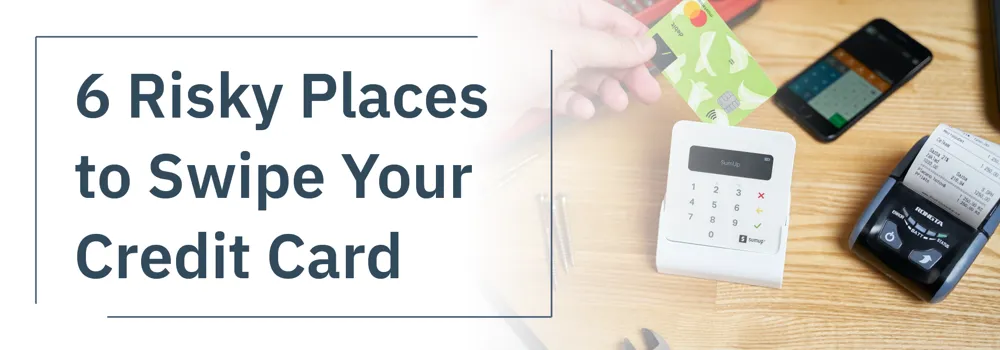Group legal insurance plans are one of the fastest growing employer benefits.

6 Risky Places to Swipe Your Credit Card
6 Risky Places to Swipe Your Credit Card
Americans make over 108 million credit card transactions per day. Those transactions present over 108 million opportunities for thieves to compromise your data. That said, it is more important now than ever before to remain vigilant of credit card use. We encourage users to monitor their statements daily and, when available, to set up mobile alerts for suspicious activity.
One of the easiest ways to mitigate the risk of credit card theft is to know where fraud is most prevalent. Let’s take a look at six high-risk establishments:
1. Gas Stations
Often poorly lit, under-supervised, and easy-to-access, gas station pumps present thieves with the perfect opportunity to commit a crime. Thieves have advanced from credit card skimmers to credit card shimmers, a strip of plastic inserted into the credit card reader that not only steals data from the magnet strip, but from the card’s chip as well.
Skimmers and shimmers are hard to detect. The safest option for credit card use at a gas station is to use the pump closest to the attendant’s booth. Thieves are less likely to tamper with pumps in close proximity to onlookers.
2. ATMs
Similar to gas station pumps, ATMs can be situated far from managing eyes. They, too, can host credit card reading systems installed by fraudsters. Be especially carefully when using standalone ATMs in mini marts, grocery stores, and hotel lobbies.
Bank ATMs are less likely to be compromised due to surveillance and high-tech security features. Still, think twice before accessing an ATM situated at the end of a bank’s drive-thru queue.
3. Parking Garages
The risk of self-service machines in parking garages is similar to that of gas stations and ATMs. Hold onto your receipt and check your credit card statements for several days after inserting into a garage kiosk to ensure your information has not been compromised.
4. Restaurants
We so desperately want to believe that when we slide our credit cards into the check presenters at restaurants that it travels directly from our hands, through the payment system, and back into our wallets. While this is often the case, there is sufficient evidence of the one-off situations in which tampering occurs.
Your credit card can be out of sight anywhere from a few seconds to several minutes depending on the diligence of your server and busyness of the restaurant. Crooked employees can very well use this time to snap a picture of your credit card information or log the numbers by hand. Keeping receipts that reflect your check total and server’s name is crucial to resolving credit card fraud in the event of a breach.
5. Festivals, Famers Markets, and Other Vendors
On-the-go payment systems such as Square, Shopify, and Toast have transformed the way independent vendors do business. They no longer have to rely on patrons having cash while vending goods at festivals, neighborhood markets, and the like. These handy credit card readers do pose a risk to consumers, however.
Not only could the vendor’s account be hacked, but the vendor himself could be purposefully stealing credit card information from patrons. Use mobile readers with caution and only purchase from vendors you know and trust.
6. Bars
Opening a tab is certainly an easy way to order drinks on the fly. Leaving your credit card in a communal box behind the bar is not the wisest security move, however. Leaving your credit card information on display, be it in a box or on the bar’s computer system, increases your likelihood of theft.
Consider paying as you go during your next night out.Check out more of our identity protection resources here.





